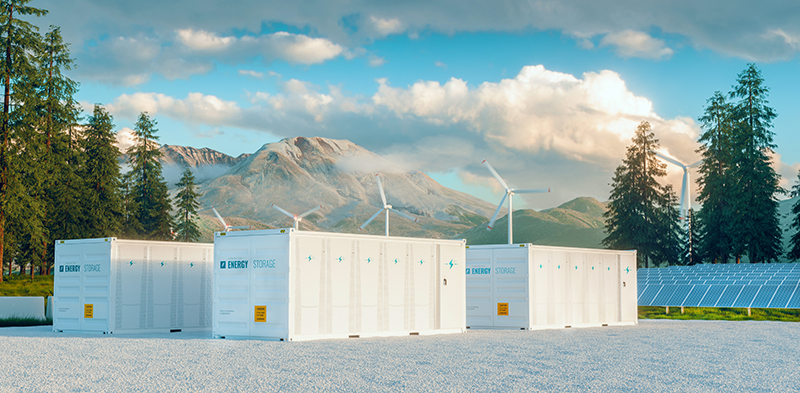
Battery Energy Storage Systems: Fire and Explosion Considerations
By Alliant
While battery manufacturing has improved, the risk of cell failure has not disappeared. When a cell fails, the main concerns are fires and explosions (also known as deflagration).
For BESS, fire can actually be seen as a positive in some cases. When batteries fail they can have what is known as a thermal runaway, which results in cells off-gassing combustible gasses. These gasses need to be mitigated in some way to prevent the deflagration event and there are various options to do that. If a fire does occur though, it may be best to allow the fire to burn, provided that adequate ventilation is supplied, to keep a good steady state of oxygen present to keep the fire going. Any attempts to disrupt this steady state of burning can result in a buildup of combustible gasses and a worse failure in the form of deflagration. This is contrary to virtually all fire protection thinking for most other hazards.
If there is a fire, there are many options for suppression currently available including fire sprinklers, manual water spray systems, clean agent gaseous systems, aerosol extinguishing agent suppression and water mist systems. Use of water spray, sprinkler protection and water mist systems may pose less risk than the aerosol and gas-based suppression, but unless the compartment is being ventilated to remove the combustible gasses at the time of the application, there is still going to be an increased risk of a deflagration. Regardless of the use of any fire suppression, our recommendation is that deflagration protection should never be omitted.
To date, most of the integrated BESS systems will typically have some type of fire or combustible gas detection. Various smoke detection strategies including spot smoke detectors and aspirating-type incipient smoke systems have been employed. Others have gone with combustible gas detection or a combination of combustible gas and smoke detection.
There is a fundamental flaw though in using either smoke or combustible gas detection if the goal is to stop a thermal runaway event. By the time a failing cell produces either, detectable levels of smoke or begins to generate and release combustible gasses, the cell will have undergone what is likely an irreversible or unstoppable failure of the critical insulation layer in the cell. While the use of smoke and combustible gas detection can be useful in activating ventilation and removal of combustible gasses from the enclosure, this should be considered as the third level in a multi-level protection design:
- The first line of defense is the battery management system to detect an event or impending event
- The second requirement is electrical isolation and rapid shutdown of the BESS system
- The third level is the removal of gasses that can cause increased fire and the potential for a deflagration event
- The fourth level is the deflagration venting which represents a failure that is just being mitigated and making the best of a bad situation
This four-step protection scheme seeks first to mitigate an event from progressing to thermal runaway using battery management controls and incipient event detection. If the first two levels of protection fail, then ventilation and finally deflagration venting are left to deal with trying to mitigate the damages. If the protection limits the damage to one or two enclosures, this should be considered a successful mitigation.
Alliant would suggest that systems incorporate initial cell failure detection as a supplemental means for electrical isolation triggering. This protection should have the goal of reacting in time, to prevent an event that could ultimately result in a thermal runaway. This detection can be tied to the battery management system to disable charging or remove the load, depending on the status of the charge/discharge cycle.
The fallback protective system, which is considered a critical part of all designs, is some type of deflagration venting that will limit internal pressures and hopefully catastrophic failure of the enclosure.
A deflagration means that other protective systems have failed, but its ventilation is designed to lessen damage to adjacent equipment and personnel. Overall, every integrator needs to show a robust means to prevent internal failures that can lead to fire or deflagration.
Alliant note and disclaimer: This document is designed to provide general information and guidance. Please note that prior to implementation your legal counsel should review all details or policy information. Alliant Insurance Services does not provide legal advice or legal opinions. If a legal opinion is needed, please seek the services of your own legal advisor or ask Alliant Insurance Services for a referral. This document is provided on an “as is” basis without any warranty of any kind. Alliant Insurance Services disclaims any liability for any loss or damage from reliance on this document.



